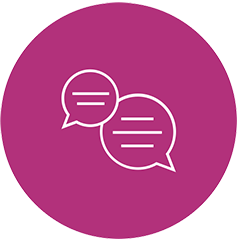Speech-in-noise difficulties beyond the audiogram (SiNDBA)
Problem
Approximately one out of ten people who present to the clinic reporting speech-in-noise hearing difficulties cannot be helped because they present normal audiometric results, and no standardised approach is available to address their hearing difficulties. NAL research revealed that these hearing difficulties can have serious impacts on mental health, behaviour, and quality of life on the people who suffer them; increasing the risk of social isolation, anxiety and depression. Furthermore, this background research also showed that this problem has a negative impact on the clinicians attending this population, who often report feeling frustrated, confused and disempowered.
Aims and hypothesis. This project aims to evaluate the value of low-gain hearing aids as a potential intervention for the target population of this study (i.e. individuals with normal audiograms who present abnormal speech-in-noise hearing difficulties). We hypothesized that the directionality provided by hearing aids would provide an acoustic advantage, which would improve their hearing experience in realistic noisy venues.
Approach
This project:
(i) used questionnaires to evaluate their self-perceived hearing difficulties,
(ii) assessed the usability and benefit of hearing aids in everyday situations via an online app, and
(iii) measured participants’ hearing performance and effort in simulated realistic environments.
Results
At group level, results revealed that the acoustic advantage provided by hearing aids leads to a moderate improvement on the hearing experience of their users. Results also showed a large inter-subject variability, with some participants experiencing a large benefit and others no significative gain. For example, one participant reported “I used the hearing aids in a very noisy bar and it was absolutely brilliant! Do I really have to return them at the end of the study? Where can I buy one? It made the whole experience so much more pleasurable and my friends who were having similar issues all want one too!”. Results from a questionnaire showed that their self-perceived hearing difficulties improved [in a scale 0 (Extreme difficulties) to 10 (No difficulties)] from a mean score of 5.1 without hearing aids to 6.4 with hearing aids. Participants satisfaction with hearing aids was 3.9, in a scale 0 (Not satisfied at all) to 6 (Fully satisfied).
Impact
This outcome will help audiologists provide more informed recommendations to clients with normal audiograms and speech-in-noise hearing difficulties, as well as manage the expectations of their patients. This project also opens new research opportunities, including the evaluation of hearables as an alternative intervention for these individuals.



